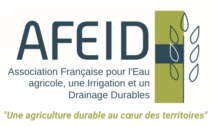A method of storing rainwater for irrigation that mitigates the spread of mosquitoes
Innovation field
Spain (Catalonia)
Summary
Rainwater storage tanks are an important factor in the spread of mosquitoes which are vectors of infectious diseases. Introducing certain types of fish into these tanks helps to control their proliferation.
If these tanks are also used for irrigation, the fish are an asset for plant fertilisation, as their nitrogen-rich faeces mix naturally with the water, reducing the need for synthetic fertiliser.
The health problem posed by mosquitoes is transformed into a low-cost fertilisation solution.
Depending on their variety, the fish can also be used for human food or animal feed.
Emergence of the innovation
Tiger mosquitoes (aedes albopictus), which originated in Asia, are now considered one of the most invasive species. Since the 1960s, they have invaded Europe, the Americas, the Caribbean, Africa and the Middle East. They are a serious vector for the transmission of pathogens such as yellow fever, dengue and chikungunya.
Dans le cadre de l’élaboration d’un jardin potager (surface d’environ 400m2) nous avons installé un système de récupération des eaux de pluies, associé à une cuve enterrée d’une capacité d’environ 40 000 litres et destinée à l’irrigation d’arbres fruitiers et de diverses cultures annuelles.
This tank soon became a breeding ground for mosquitoes. We tried several solutions to limit their number:
- Installation of a mesh filter on the rainwater inlet (abandoned because it was too often blocked by leaves and other plant debris from the roof);
- Adding a thin layer of vegetable oil to the surface of the water to prevent mosquitoes from laying their larvae (ineffective, the oil seeped into the walls);
- Adding small amounts of chlorine to the water in an attempt to kill the larvae (difficult to dose correctly, risk of contamination for the plants).
Finally, it was while researching information on strategies to limit the spread of epidemics that we discovered the idea of introducing fish, a technique which has been used successfully against malaria in South America and in Russia on the Black Sea coast.
Solution(s) provided by the innovation
After a few months the situation improved significantly. Whereas initially a large cloud of mosquitoes would escape when the tank door was opened, now only a few and often none emerge.
Since the tank is located right next to a house, close to a frequently used area, it is now much more pleasant to spend time there, especially for children who are sensitive to bites.
Although it is difficult to measure the benefit of the fertilisation of the water created by the fish excrements, we believe that it enhances the irrigation quality.
History of evolution since emergence (implementation on the field)
The first constraint was to locate a supplier of Gambusia affinis, commonly known as Gambusia. This variety is classified as invasive and it is difficult to find it for sale to the public in Spain.
Introduced in 1921 for mosquito control, this species quickly proliferated and displaced and impacted many native species. Its aggressiveness, high fecundity and high tolerance to environmental contamination make it difficult to control once released into ponds and waterways. In a closed system such as a tank or reservoir, however, these characteristics are advantages and the risks of it spreading in the environment are limited.
We finally found a seller of Gambusia and ordered a batch of 100 specimens.
Secondly, we installed a small pump to oxygenate the water by circulating it. This pump is no longer in use which does not seem to affect the well-being of the fish.
To prevent small debris (twigs, gravel, etc.) from entering the irrigation pipes, we raised the level of the water outlet, thus allowing the waste to settle at the bottom of the tank.
During our last inspection of the tank we installed a pile of large stones in a corner to act as a refuge for the females when laying eggs and for fry.
Users' opinions / elements of acceptance of the innovation
According to the feedback we have received on permaculture forums, this method is used with varying degrees of success at different scales, from a simple wooden barrel to a reservoir, and with different types of fish (guppy, minnow, koi, etc).
Economic assessment of the innovation
The construction of an underground storage tank can range from a few hundred to several thousand euros depending on its capacity and the materials used.
The cost of 100 Gambusia affinis fish is approximately 30 euros; prices vary according to the species.
Gutters and piping to collect and transport the rainwater range from a few dozen to a several hundred euros depending on the size of the installation.
Prospects for the evolution of the innovation
It is difficult to estimate the fish population in the tank without physically entering it when it is almost empty.
We wonder if more rocks and other debris should be placed in the tank to provide habitat. As Gambusia can become highly aggressive, there is a risk that a small number of fish could devour the fry and jeopardize the colony’s survival.
We have some concerns in terms of long-term resilience, as periods of extreme heat or cold could theoretically harm the fish population, although we have not yet witnessed this. It is certain that a buried or semi-buried tank benefits from the thermal mass effect of the soil which helps to mitigate excessive temperature variations.
We do not have precise data on the fertilisation level of the water in the tank; PH analyses and NPK ratios should be carried out.
A possible development for very large tanks, particularly used in aquaponics, would be to periodically catch some of the fish to consume them and regulate their population, or conversely, to periodically introduce new fry.
The creation of a small basin at the bottom of the tank would also make it possible to group the fish in a restricted space during emptying without risking losing them. This would make it easier to count and/or fish them in order to maintain an adequate population for the next cycle.
Conditions for the dissemination of the innovation and replicability
To our knowledge, fish of the Gambusia affinis type are easily transportable and available throughout the world. It is likely that other species are adapted to other types of climate (in this case we are in zone 9b, Mediterranean).
The basic logic is very simple and reproducible at several scales. It is a matter of introducing a predator where a pest species reproduces. This predator must be able to adapt to the environment, and ideally even contribute to how humans use this environment (in this case by modifying the chemical composition of the water to make it beneficial for irrigation), all in an environment that does not disturb the local ecosystem.
An example of a similar system is the introduction of bats through the strategic placement of nests in areas of high mosquito density. The bats produce guano (another very effective natural fertiliser) in large quantities, which can then be used by humans.
Associated risks, negative externalities
To ensure a suitable environment, the water collected must be of good quality, free of pesticides and other contaminants, and rich in organic matter. This system might not work in a highly urbanised environment or near industrial areas, although Gambusia are known for their resistance to contaminants.
It is preferable not to filter the water supply too heavily and to allow small plant debris, mosses, etc. to enter. This will also allow insects to enter the tank, and thus mosquitoes whose larvae will serve as food for the fish.
In this type of case, the tank should be completely cleaned every five years or so to remove deposits that could clog the irrigation pipes over time.
If the tank has to be completely emptied, care should be taken not to release the fish into a waterway or public pipe if they are of an invasive and non-endemic species, such as Gambusia. This can be avoided by filtering the water at the outlet when purging the tank (using a very fine filter, as the fry can be tiny). As a precautionary measure, it is best to drain the tank in a field or a spot of loose soil far from any water source (river, pond, well, pipe vault, etc.). As the water would thus slowly infiltrate directly into the soil, the risk of the fish spreading in the natural environment would be very low, or even nil, provided that no birds catch them and potentially release them in a nearby wetland.
In any case, invasive fish must not leave the site, as releasing them into the wild can cause serious environmental damage and the owner could be liable to sanctions. It is therefore the user's responsibility to do everything possible to avoid contributing to the spread of their fish in the ecosystem.
Additional documentation
World Health Organization. Regional Office for the Eastern Mediterranean. (2003). Use of fish for mosquito control
H. Drardja-Beldi (1993), Contribution à L’étude de Gambusia affinis (Téléostéen, Poeciliidae), Poisson Prédateur des Larves de Moustiques, Croissance des Alevins, Étude du Cycle Sexuel et Corrélations Métapoliques, Thèse de doctorat, université d’Annaba, Algérie
OPIE (2002) Elles aussi, elles aiment les insectes … Les Gambusies, revue Insectes 14, no 125, sur le site de l’INRA (PDF, 3 pages)
Rana W. El-Sabaawi, Therese C. Frauendorf, Piata S. Marques, Richard A. Mackenzie, Luisa R. Manna, Rosana Mazzoni, Dawn A. T. Phillip, Misha L. Warbanski, Eugenia Zandonà (2016) Biodiversity and ecosystem risks arising from using guppies to control mosquitoes ; Biology Letters (Royal Society) ; 25 octobre 2016 ; DOI: 10.1098/rsbl.2016.0590




Leave a Reply
Want to join the discussion?Feel free to contribute!